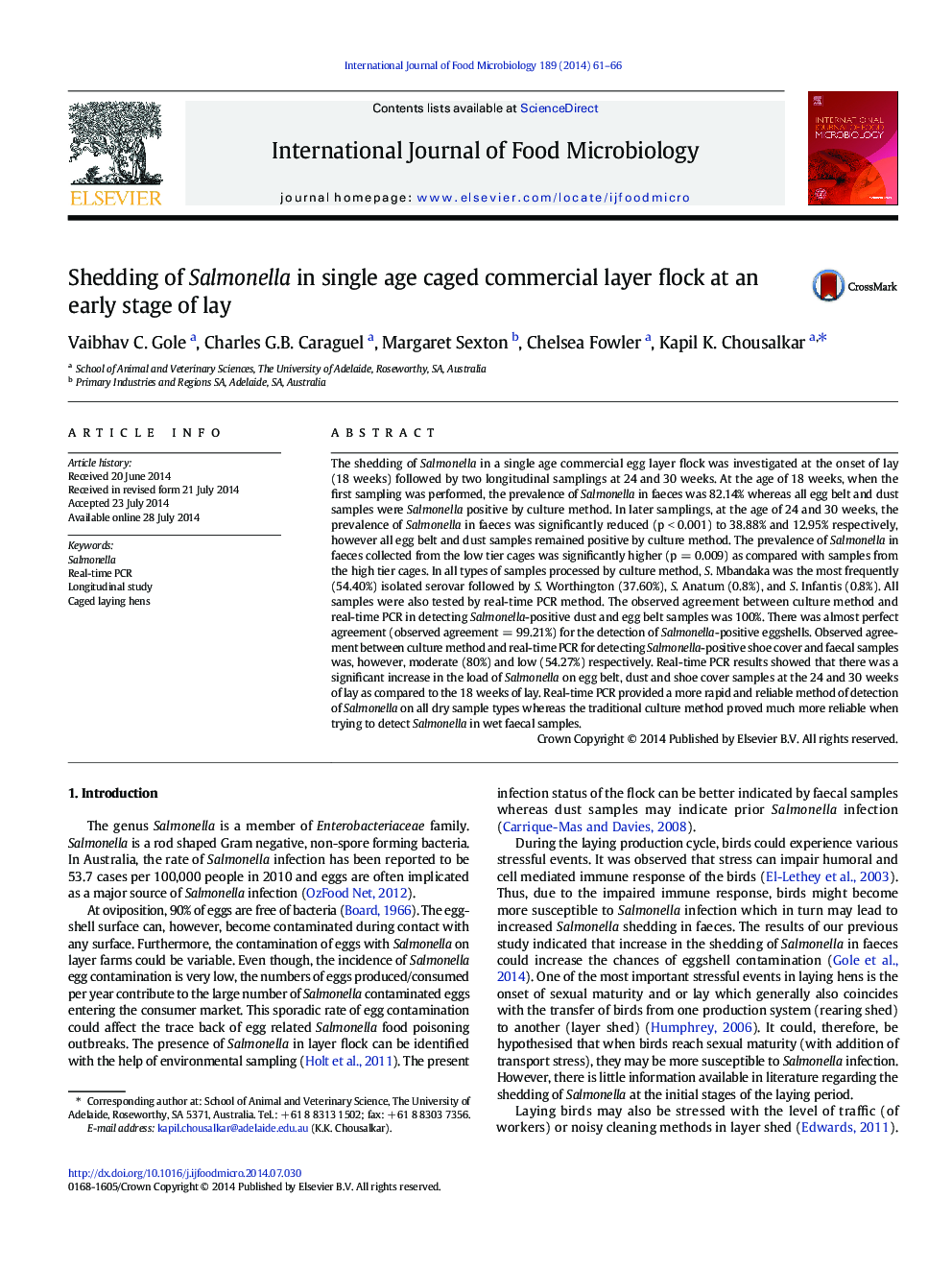| Article ID | Journal | Published Year | Pages | File Type |
|---|---|---|---|---|
| 6290005 | International Journal of Food Microbiology | 2014 | 6 Pages |
Abstract
The shedding of Salmonella in a single age commercial egg layer flock was investigated at the onset of lay (18 weeks) followed by two longitudinal samplings at 24 and 30 weeks. At the age of 18 weeks, when the first sampling was performed, the prevalence of Salmonella in faeces was 82.14% whereas all egg belt and dust samples were Salmonella positive by culture method. In later samplings, at the age of 24 and 30 weeks, the prevalence of Salmonella in faeces was significantly reduced (p < 0.001) to 38.88% and 12.95% respectively, however all egg belt and dust samples remained positive by culture method. The prevalence of Salmonella in faeces collected from the low tier cages was significantly higher (p = 0.009) as compared with samples from the high tier cages. In all types of samples processed by culture method, S. Mbandaka was the most frequently (54.40%) isolated serovar followed by S. Worthington (37.60%), S. Anatum (0.8%), and S. Infantis (0.8%). All samples were also tested by real-time PCR method. The observed agreement between culture method and real-time PCR in detecting Salmonella-positive dust and egg belt samples was 100%. There was almost perfect agreement (observed agreement = 99.21%) for the detection of Salmonella-positive eggshells. Observed agreement between culture method and real-time PCR for detecting Salmonella-positive shoe cover and faecal samples was, however, moderate (80%) and low (54.27%) respectively. Real-time PCR results showed that there was a significant increase in the load of Salmonella on egg belt, dust and shoe cover samples at the 24 and 30 weeks of lay as compared to the 18 weeks of lay. Real-time PCR provided a more rapid and reliable method of detection of Salmonella on all dry sample types whereas the traditional culture method proved much more reliable when trying to detect Salmonella in wet faecal samples.
Related Topics
Life Sciences
Agricultural and Biological Sciences
Food Science
Authors
Vaibhav C. Gole, Charles G.B. Caraguel, Margaret Sexton, Chelsea Fowler, Kapil K. Chousalkar,
